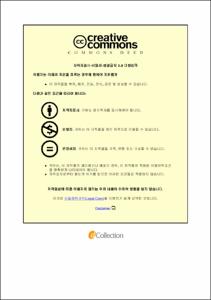Characterization of Yellowtail Fish Viscera Lipid Extracted Using Supercritical Carbon Dioxide and Organic Solvents
- Alternative Title
- 초임계 이산화탄소 및 유기용매에 의해 추출된 방어 내장의 지질에 대한 특성
- Abstract
- Every year a large number of by-products produced by fish processing industries are dumped or used for less productive purposes. This study prescribes a technique for production of good quality edible lipids from yellowtail fish (Seriola quinqueradiata) viscera to valuate this wastes and also serve as a source for omega-3 polyunsaturated fatty acids. The extraction method plays a very strong role in the quality of extracted lipids as they oxidize easily when in contact with atmospheric air, light and high temperature. Conventional method of extraction involves the use of high temperature and solvent which are considered to have unfavorable effects on the environment and consumers health. Supercritical carbon dioxide (SC-CO2) technique is a promising method for the extraction of edible lipids, as it is a green technology and non-toxic in food.
In the first study, yellowtail fish viscera oil was extracted using SC-CO2 method and soxhlet method. Oils extracted by SC-CO2 method showed better physio-chemical properties than oils extracted using soxhlet method. Extracted yellowtail viscera oil contained a maximum amount of 20.14% of omega-3 polyunsaturated fatty acids. The thermogravimetric analysis showed that yellowtail viscera oil extracted using SC-CO2 method can be utilized in high-temperature food processing industries.
The second research work aims to study the quality of yellowtail fish viscera phospholipids extracted by SC-CO2 with ethanol as co-solvent method and organic solvent (ethanol) method. Phosphatidylcholine (PC), phosphatidylinositol (PI), phosphatidylserine, and phosphatidylethanolamine (PE) were detected in the extracted phospholipids, with PC accounting 82% of the total phospholipid. Yellowtail fish viscera phospholipids contained a high amount of docosahexaenoic acid (DHA) and eicosapentaenoic acid (EPA). Phospholipid extracted by SC-CO2 with ethanol as co-solvent showed better oxidative stability and free radical properties than organic solvent extracted phospholipid.
In conclusion, SC-CO2 technique showed to be an excellent method for the extraction of good quality lipids from fish material. Yellowtail fish viscera lipids can serve as a good source of omega-3 polyunsaturated fatty acids and as such, it would help reduce environmental pollution. This research may be helpful in the application of yellowtail fish viscera lipids in food and pharmaceutical industries.
- Issued Date
- 2019
- Awarded Date
- 2019. 8
- Type
- Dissertation
- Publisher
- 부경대학교
- Affiliation
- 부경대학교 대학원
- Department
- 대학원 식품공학과
- Advisor
- 전병수
- Table Of Contents
- CHAPTER 1 1
General Introduction 1
1.1. Background 1
1.2. Phospholipid 5
1.3. Polyunsaturated Fatty Acids (PUFA) 7
1.4. Supercritical fluid extraction 10
1.4.1. Properties of supercritical fluid 13
CHAPTER 2 16
Characterization of yellowtail fish viscera oil extracted using supercritical carbon dioxide and organic solvents 16
2.1. Introduction 16
2.2. Materials and Methods 18
2.2.1. Chemicals and reagents 18
2.2.2. Sample preparation 18
2.2.3. Supercritical carbon dioxide (SC-CO2) extraction 19
2.2.4. Soxhlet extraction21
2.2.5. Oil stability tests 21
2.2.6 Color 22
2.2.7. Thermogravimetric analysis 22
2.2.8. Fatty acid composition analysis 23
2.2.9. Statistical analyses 23
2.3. Results and Discussion 23
2.3.1 Oil yield 23
2.3.2. Influence of extraction time, pressure and temperature 24
2.3.3. Fatty acids composition 31
2.3.4. Physico-chemical properties 32
2.3.5. Thermogravimetric analysis 38
2.4. Conclusion 40
CHAPTER 3 41
Characterization of phospholipids extracted from yellowtail fish viscera using supercritical carbon dioxide with ethanol as co-solvent 41
3.1. Introduction 41
3.2. Materials and Methods 43
3.2.1. Chemicals and reagents 43
3.2.2. Sample preparation 43
3.2.3. Phospholipid extraction using SC-CO2 and ethanol as co-solvent 43
3.2.4. Total organic solvent extraction of phospholipid 44
3.2.5. YTV phospholipid yield and purity measurement 45
3.2.6. Thin layer chromatography (TLC) analysis of phospholipid 45
3.2.7. Analysis of major phospholipid groups using HPLC 45
3.2.8. Phospholipid stability analysis 46
3.2.9. Thermogravimetric analysis of phospholipid 46
3.2.10. Fatty acid composition 47
3.2.11. DPPH radical scavenging activities of YTV phospholipids 47
3.2.12. ABTS radical scavenging activity 48
3.2.13. Statistical analyses 48
3.3. Results and Discussion 48
3.3.1. Yield and purity of phospholipids from YTV 48
3.3.2. TLC analysis of major phospholipid groups 49
3.3.3. Analysis of major YTV phospholipid groups using HPLC 52
3.3.4. Phospholipid stability analysis 52
3.3.5. Fatty acid composition of YTV phospholipids 55
3.3.6. Thermogravimetric analysis 57
3.3.7. Antioxidant activity of YTV phospholipid 59
3.4. Conclusion 61
References 62
Abstract (in Korean) 70
Acknowledgement 72
- Degree
- Master
- Files in This Item:
-
-
Download
 Characterization of Yellowtail Fish Viscera Lipid Extracted Using Supercritical Carbon Dioxide and O.pdf
기타 데이터 / 1.13 MB / Adobe PDF
Characterization of Yellowtail Fish Viscera Lipid Extracted Using Supercritical Carbon Dioxide and O.pdf
기타 데이터 / 1.13 MB / Adobe PDF
-
Items in Repository are protected by copyright, with all rights reserved, unless otherwise indicated.